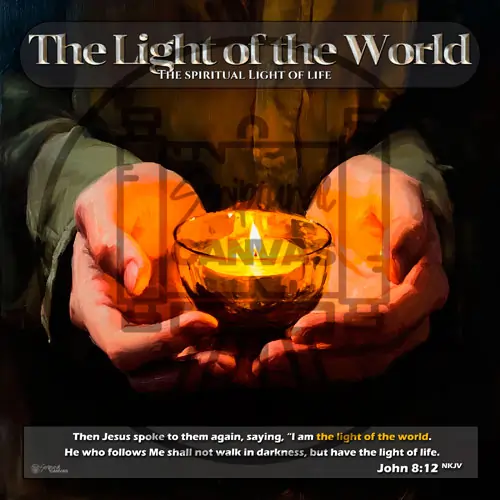Description
The Majestic Gaze: Unveiling the Lion of Judah
This striking Scriptile image, a close-up of a magnificent lion with its gaze lifted towards a brilliant light source against a stark, dark backdrop, serves as a powerful visual representation of Jesus Christ, the Lion of Judah. It’s not merely a depiction of a regal animal; it’s a symbolic portrayal of divine authority, triumphant strength, and the fulfillment of ancient prophecies. The lion, with its flowing mane and intense expression, embodies the royal lineage and unwavering power attributed to Jesus in the scriptures. The contrast between the illuminated face and the dark background amplifies the sense of divine revelation, suggesting a light breaking through the darkness of human experience.
Royal Lineage and Prophetic Fulfillment
The title “Lion of Judah” originates from Genesis 49, where Jacob, on his deathbed, prophesies concerning Judah: “9 Judah is a lion’s whelp; from the prey, my son, you have gone up. He bows down, he lies down as a lion; and as a lion, who shall rouse Him? 10 The scepter shall not depart from Judah, nor a lawgiver from between his feet, until Shiloh comes; and to Him shall be the obedience of the people.“ This prophecy speaks of Judah’s royal lineage and dominion, foreshadowing the coming of a king from his tribe. The image captures this royal essence, with the lion’s majestic posture and intense gaze reflecting the promised king’s inherent authority.
Revelation’s Triumphant Lion
Revelation 5 provides the most direct scriptural context for the title “Lion of Judah”: “4 And I began to weep bitterly, because no one was found worthy to open the scroll or look inside it. 5 Then one of the elders said to me, “Do not weep! Behold, the Lion of the tribe of Judah, the Root of David, has triumphed to open the scroll and its seven seals.”” John weeps for lack of a worthy opener, but is comforted by the elder’s declaration of Jesus, the Lion of Judah, as the triumphant one able to open the scroll. This verse highlights Jesus’ worthiness and authority, emphasizing His victory over sin and death.
The Root of David and Messianic Hope
The phrase “Root of David,” also mentioned in Revelation 5:5, connects Jesus to the lineage of King David, fulfilling another crucial Messianic prophecy. Isaiah 11:1 speaks of this connection: “There shall come forth a Rod from the stem of Jesse, and a Branch shall grow out of his roots.“ This “Branch” is understood to be the Messiah, Jesus, who descended from David’s father, Jesse. The image, with its powerful portrayal of the lion, reinforces this Messianic hope, showcasing Jesus as the rightful heir to David’s throne. The upward gaze towards the light can be interpreted as a symbol of Jesus’ divine connection, reinforcing his role as the promised Messiah.
Strength, Authority, and Divine Revelation
The lion, a symbol of strength and authority throughout scripture, is a fitting representation of Jesus’ power and dominion. Proverbs 30:30 speaks of the lion, “which is mighty among beasts and does not turn away from any,” highlighting its unmatched strength. The image captures this strength, portraying the lion’s unwavering gaze and powerful presence. The light source, illuminating the lion’s face, signifies divine revelation, highlighting Jesus’ role as the Light of the World, the one who brings light and truth to a world shrouded in darkness. John 1:5 reinforces this, stating, “The light shines in the darkness, and the darkness has not overcome it.”
The Lion’s Roar: A Call to Worship
Beyond strength and authority, the roar of the lion also symbolizes a call to worship and recognition of divine majesty. Psalm 29 speaks of God’s voice as a powerful roar: “3 The voice of the Lord is over the waters; the God of glory thunders, the Lord, over many waters. 4 The voice of the Lord is powerful;
the voice of the Lord is full of majesty.“ This image, with its intense portrayal of the lion, evokes a sense of awe and reverence, prompting the viewer to recognize Jesus’ divine majesty. The lion’s upward gaze, towards the light, suggests a posture of worship, inviting us to join in acknowledging Jesus as the King of Kings.
A Visual Testament to Christ’s Kingship
In essence, this Scriptile image serves as a visual testament to the scriptural significance of the “Lion of Judah.” It captures Jesus’ royal lineage, triumphant strength, and divine authority, as prophesied in both the Old and New Testaments. The upward gaze towards the light symbolizes divine revelation, while the powerful portrayal of the lion evokes a sense of awe and reverence. By connecting this image to the rich scriptural context, we gain a deeper understanding of Jesus’ role as the Lion of Judah, the Root of David, and our King, inviting us to reflect on his majesty and dominion.







Reviews
There are no reviews yet.